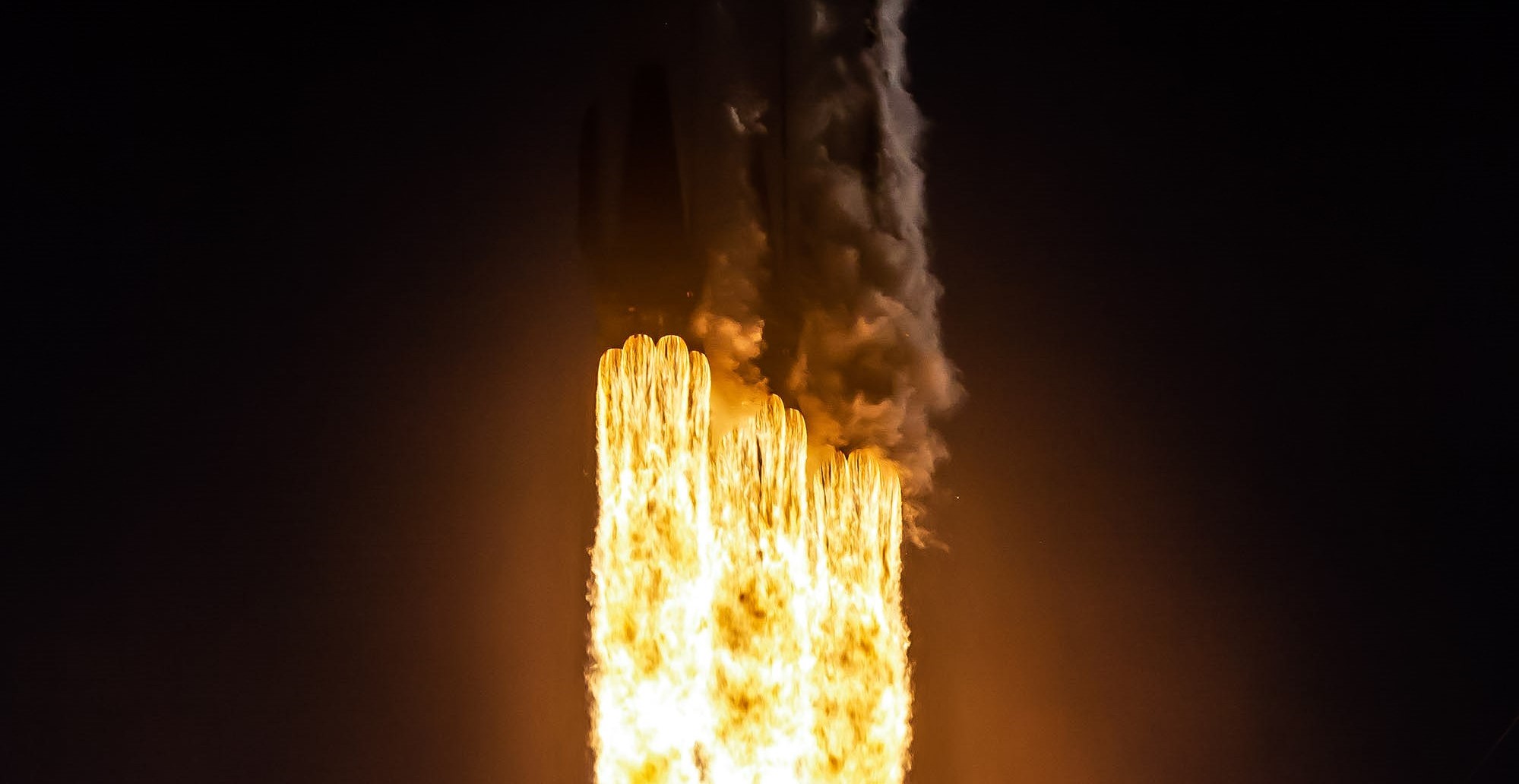

News
SpaceX’s Falcon Heavy rocket could launch a NASA space station to the Moon
According to NASA, a SpaceX Falcon Heavy rocket (or another commercial heavy-lift launch vehicle) could potentially launch the bulk of a new Moon-orbiting space station in a single go, saving money and reducing risk.
Known as the Gateway, NASA is working to build a tiny space station in an exotic and odd orbit around the Moon. Lacking any clear and pressing purpose, NASA and the Gateway’s proponents have argued that it could serve as a testbed for interplanetary missions, allowing the space agency to figure out how to keep astronauts alive and healthy in deep space. Later, it was proposed as a sort of unwieldy orbital tug and home base for crewed Moon landers, although the Gateway appears to have recently been removed from any plans for mid-2020s Moon landings.
Most likely, the station is being built in order to give NASA’s wildly over-budget, behind-schedule Orion spacecraft and SLS rocket some kind of destination worthy of their gobsmacking $2-3 billion launch cost and $35-40 billion development cost. Regardless, a space station orbiting the Moon – while lacking a clear and present scientific or exploratory reason for its existence – is undeniably cool and exciting and will indeed need to be launched into cislunar space. Previously planned to launch as separate modules that would then rendezvous and dock in at the Moon, NASA has recently decided to switch gears.
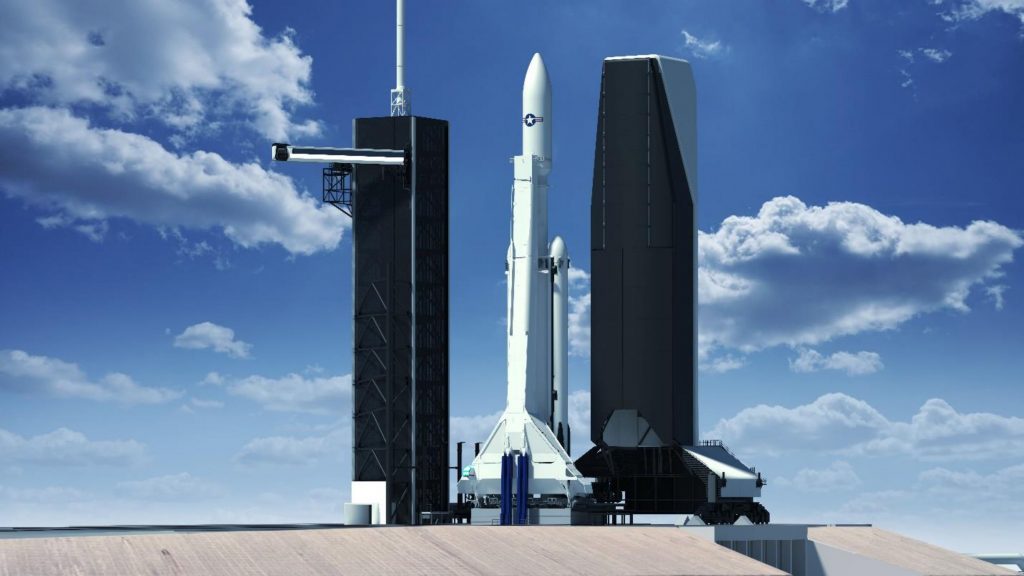
As of May 2020, NASA has awarded three critical hardware contracts for Gateway. In 2019, the space agency awarded contracts to Maxar and Northrop Grumman to build the Power and Propulsion Element (PPE) and Habitation and Logistics Outpost (HALO), respectively. As the name suggests, the PPE will feature an exceptionally large ~50 kW solar array and the most powerful electric thrusters ever flown in space, thus supplying Gateway with electricity and propulsion. HALO is a miniscule habitat module also responsible for life support and providing all other basic necessities for astronauts to live in space, all of which will leave a tiny amount of actual habitable volume for those astronauts to live in.
Most recently, NASA also awarded SpaceX a contract to develop a new Dragon XL spacecraft that will launch on Falcon Heavy and autonomously resupply the lunar space station at least twice, should Gateway actually make it to launch.
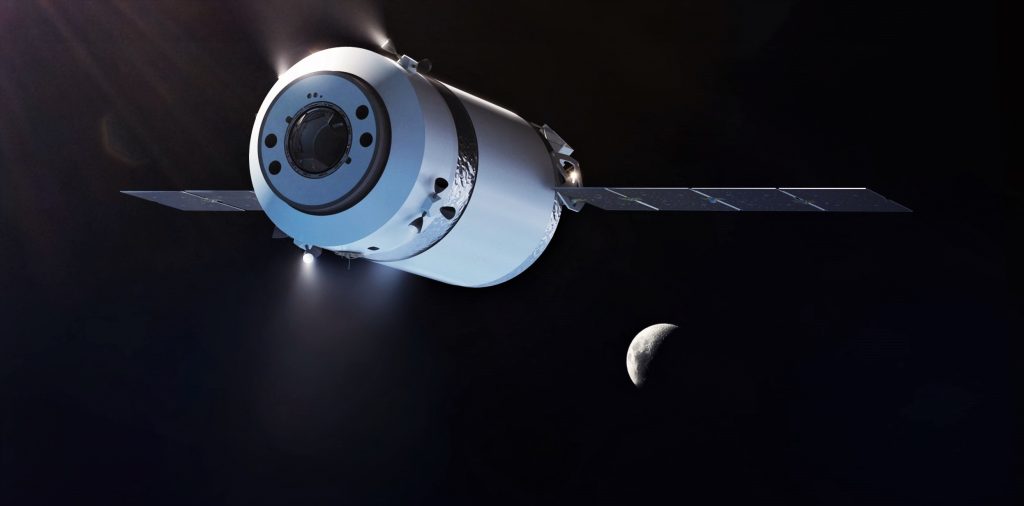
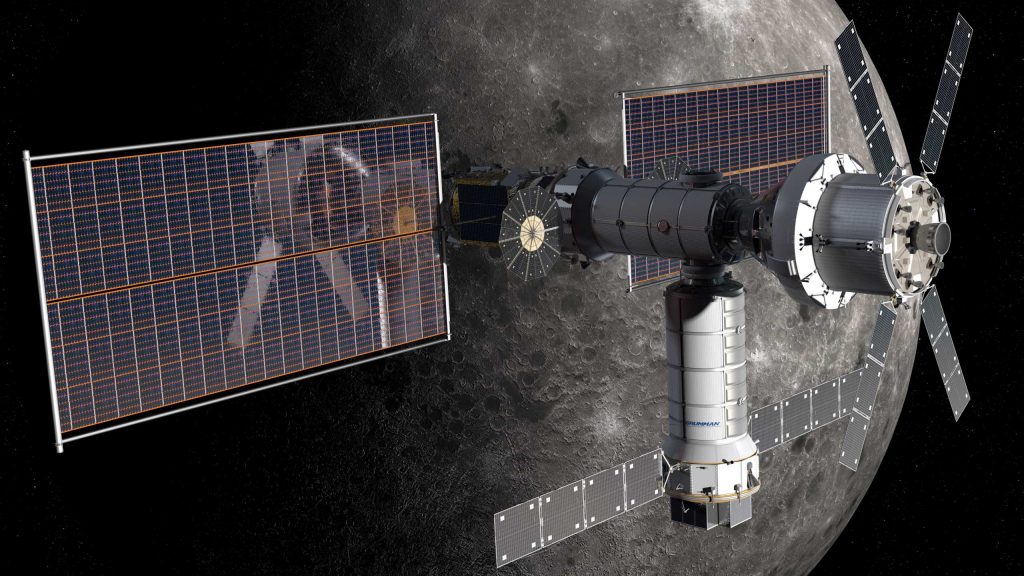
The notional plan is to eventually expand the habitable volume of the station from living in a large SUV to something more like a small studio apartment, a bit less than a third as large as the International Space Station (ISS) in a best-case scenario. The ISS is designed to support at least six astronauts simultaneously and has done so for almost two decades, albeit only with the help of resupply missions launched from Earth every 2-3 months. Indeed, the plan is to send up to four astronauts to the Gateway for no more than 90 days a year.
Two birds, one stone; two eggs, one basket
Originally, NASA wanted to launch the PPE and HALO modules – together representing the absolute bare minimum needed to build a functional Gateway – on separate commercial rockets in 2022 and 2023, respectively. Now, according to NASA associate administrator Doug Loverro, the space agency has made the decision to launch both modules simultaneously on the same commercial rocket.

This decision was made in large part because it makes sense from a technical simplicity and overall efficiency standpoint but also because several commercial launch vehicles – either currently operational or soon to be – are set to debut extremely large payload fairings. As a combined payload, the Gateway PPE and HALO modules would be too big for just about any existing launch vehicle, while the tiny handful it might fit in lack the performance needed to send such a heavy payload to the Moon.
Falcon Heavy apparently has the performance needed, as NASA used the rocket and a new stretched fairing developed by SpaceX for military customers as a baseline to determine whether PPE and HALO could launch together. Given that NASA could have technically used any of the vehicles expected to have large payload fairings for that analysis, the explicit use and mention of Falcon Heavy rather strongly suggests that the SpaceX rocket is a front runner for the new combined launch contract. This isn’t exactly surprising, given that the massive rocket has already completed three successful launches and will attempt at least another four missions between now and 2023.

Of the other launch vehicles expected to feature large fairings capable of supporting the combined PPE/HALO payload, ULA’s Vulcan Centaur rocket is scheduled to launch for the first time in July 2021, while Blue Origin’s New Glenn is unlikely to launch before late 2021. Northrop Grumman is also developing the Omega rocket with a large fairing, although it’s unlikely to have the performance needed for the unique Gateway payload. As such, by 2023, Falcon Heavy will almost certainly have a record of launches well out of reach of other prospective PPE/HALO launch competitors. For obvious reasons, putting both modules of a space station on a single launch raises the stakes, making it more critical than ever than risk be reduced where it can be – especially important for launch operations.
Notionally including Gateway’s PPE and HALO, Falcon Heavy now has as many as nine launches on contract (or nearly so) over the next five or so years. It’s extraordinarily unlikely that any of Falcon Heavy’s prospective competitors will be able to get close to the SpaceX rocket’s flight history by 2023, effectively making Falcon Heavy the de facto choice for NASA from an apolitical, technical perspective.

News
Tesla FSD (Supervised) is about to go on “widespread” release
In a comment last October, Elon Musk stated that FSD V14.2 is “for widespread use.”

Tesla has begun rolling out Full Self-Driving (Supervised) V14.2, and with this, the wide release of the system could very well begin.
The update introduces a new high-resolution vision encoder, expanded emergency-vehicle handling, smarter routing, new parking options, and more refined driving behavior, among other improvements.
FSD V14.2 improvements
FSD (Supervised) V14.2’s release notes highlight a fully upgraded neural-network vision encoder capable of reading higher-resolution features, giving the system improved awareness of emergency vehicles, road obstacles, and even human gestures. Tesla also expanded its emergency-vehicle protocols, adding controlled pull-overs and yielding behavior for police cars, fire trucks, and ambulances, among others.
A deeper integration of navigation and routing into the vision network now allows the system to respond to blocked roads or detours in real time. The update also enhances decision-making in several complex scenarios, including unprotected turns, lane changes, vehicle cut-ins, and interactions with school buses. All in all, these improvements should help FSD (Supervised) V14.2 perform in a very smooth and comfortable manner.
Elon Musk’s predicted wide release
The significance of V14.2 grows when paired with Elon Musk’s comments from October. While responding to FSD tester AI DRIVR, who praised V14.1.2 for fixing “95% of indecisive lane changes and braking” and who noted that it was time for FSD to go on wide release, Musk stated that “14.2 for widespread use.”
FSD V14 has so far received a substantial amount of positive reviews from Tesla owners, many of whom have stated that the system now drives better than some human drivers as it is confident, cautious, and considerate at the same time. With V14.2 now rolling out, it remains to be seen if the update also makes it to the company’s wide FSD fleet, which is still populated by a large number of HW3 vehicles.
News
Tesla FSD V14.2 starts rolling out to initial batch of vehicles
It would likely only be a matter of time before FSD V14.2 videos are posted and shared on social media.
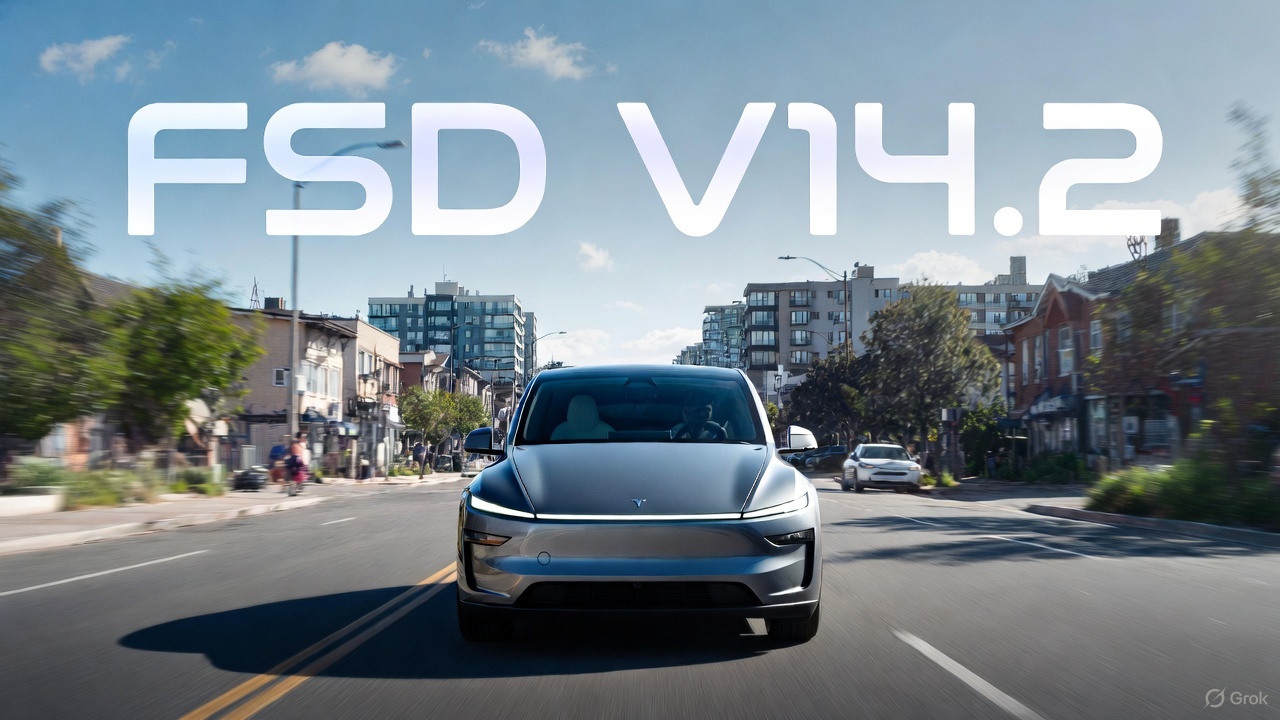
Tesla has begun pushing Full Self-Driving (Supervised) v14.2 to its initial batch of vehicles. The update was initially observed by Tesla owners and veteran FSD users on social media platform X on Friday.
So far, reports of the update have been shared by Model Y owners in California whose vehicles are equipped with the company’s AI4 hardware, though it would not be surprising if more Tesla owners across the country receive the update as well.
Based on the release notes of the update, key improvements in FSD V14.2 include a revamped neural network for better detection of emergency vehicles, obstacles, and human gestures, as well as options to select arrival spots.
It would likely only be a matter of time before FSD V14.2 videos are posted and shared on social media.
Following are the release notes of FSD (Supervised) V14.2, as shared on X by longtime FSD tester Whole Mars Catalog.

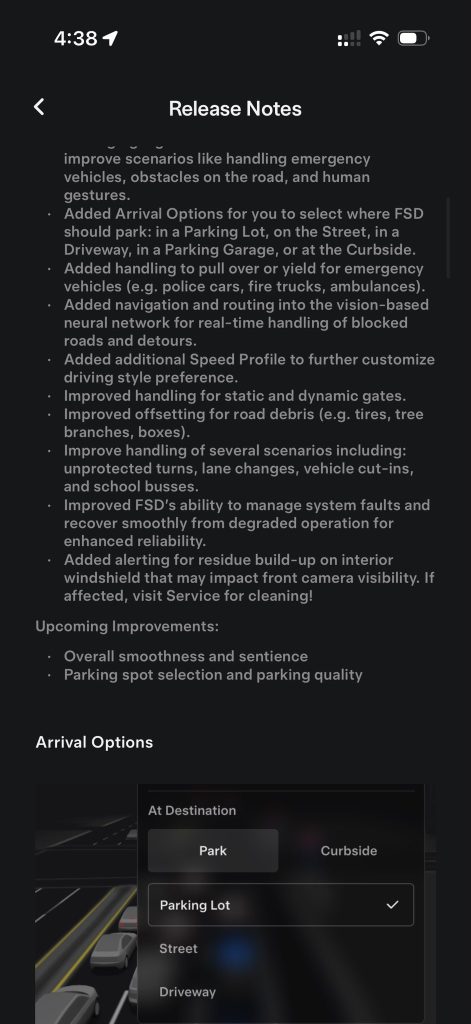
Release Notes
2025.38.9.5
Currently Installed
FSD (Supervised) v14.2
Full Self-Driving (Supervised) v14.2 includes:
- Upgraded the neural network vision encoder, leveraging higher resolution features to further improve scenarios like handling emergency vehicles, obstacles on the road, and human gestures.
- Added Arrival Options for you to select where FSD should park: in a Parking Lot, on the Street, in a Driveway, in a Parking Garage, or at the Curbside.
- Added handling to pull over or yield for emergency vehicles (e.g. police cars, fire trucks, ambulances.
- Added navigation and routing into the vision-based neural network for real-time handling of blocked roads and detours.
- Added additional Speed Profile to further customize driving style preference.
- Improved handling for static and dynamic gates.
- Improved offsetting for road debris (e.g. tires, tree branches, boxes).
- Improve handling of several scenarios including: unprotected turns, lane changes, vehicle cut-ins, and school busses.
- Improved FSD’s ability to manage system faults and improve scenarios like handling emergency vehicles, obstacles on the road, and human gestures.
- Added Arrival Options for you to select where FSD should park: in a Parking Lot, on the Street, in a Driveway, in a Parking Garage, or at the Curbside.
- Added handling to pull over or yield for emergency vehicles (e.g. police cars, fire trucks, ambulances).
- Added navigation and routing into the vision-based neural network for real-time handling of blocked roads and detours.
- Added additional Speed Profile to further customize driving style preference.
- Improved handling for static and dynamic gates.
- Improved offsetting for road debris (e.g. tires, tree branches, boxes).
- Improve handling of several scenarios, including unprotected turns, lane changes, vehicle cut-ins, and school buses.
- Improved FSD’s ability to manage system faults and recover smoothly from degraded operation for enhanced reliability.
- Added alerting for residue build-up on interior windshield that may impact front camera visibility. If affected, visit Service for cleaning!
Upcoming Improvements:
- Overall smoothness and sentience
- Parking spot selection and parking quality
News
Tesla Model X lost 400 pounds thanks to these changes
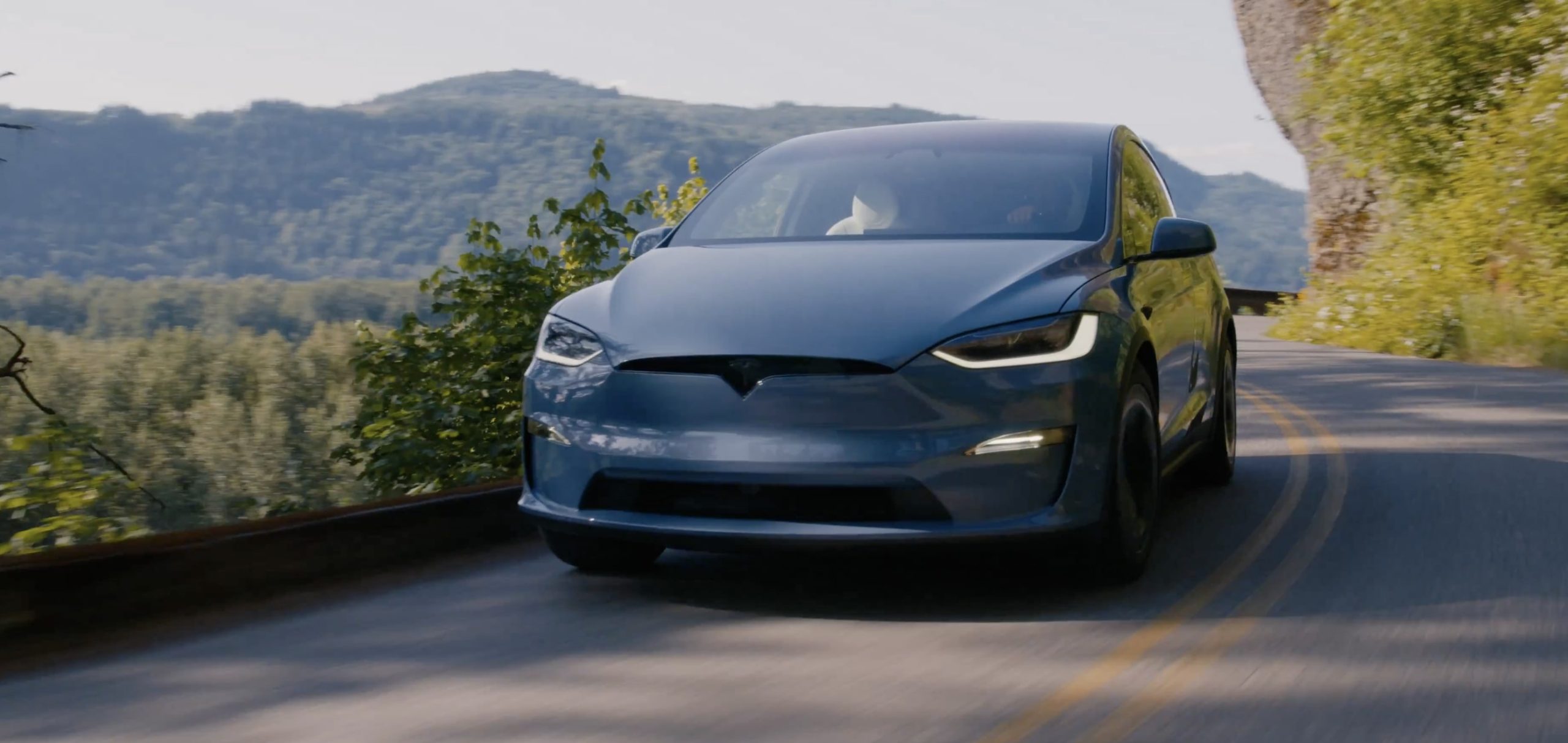
The Tesla Model X has always been one of the company’s most loved vehicles, despite its low sales figures, which can be attributed to its high price tag.
However, the Model X has been a signature item on Tesla’s menu of cars, most notably recognized by its Falcon Wing Doors, which are aware of its surroundings and open according to what’s around it.
But recent improvements to the Model X were looking slim to none, but it appears most of the fixes actually happened under the body, at least according to Tesla’s Vice President of Powertrain, Lars Moravy.
In a recent interview with Car and Driver, Moravy detailed all of the changes to the 2026 iteration of the vehicle, which was about 400 pounds lighter than it was originally. The biggest change is a modification with the rear motor, switching from an induction-type motor to a permanent-magnet design and optimizing the half-shafts, which shed about 100 pounds.
Tesla also got “almost 80 pounds out of the interior bits and pieces,” which “included making parts thinner, different manufacturing process choices, and incorporating airbag-deployment requirements into the headliner fabric,” the report said.
Additionally, the standard five-passenger, bench seat configuration saved 50 pounds by ditching pedestal mounting. This also helped with practicality, as it helped the seat fold flat. Engineers at Tesla also saved 44 pounds from the high-voltage wiring through optimizing the wiring from the charge-port DC/DC converter and switching from copper to aluminum wiring.
Tesla makes a decision on the future of its flagship Model S and Model X
Tesla also simplified the cooling system by reducing the number of radiators. It also incorporated Nürburgring cooling requirements for the Plaid variant, which saved nearly 30 pounds.
Many Tesla fans will be familiar with the megacastings, manufactured in-house by presses from IDRA, which also saves more than 20 pounds and boosts torsional stiffness by around 10 percent. Tweaks to the suspension also saved 10 pounds.
People were truly disappointed with what Tesla did with the Model S and Model X, arguing that the cars needed a more severe exterior overhaul, which might be true. However, Tesla really did a lot to reduce the weight of the vehicle, which helps increase range and efficiency. According to Grok, every 200 pounds removed adds between 7 and 15 percent to range estimations.
This makes sense considering the range estimations both increased by 7 percent from the Model X’s 2025 configuration to the 2026 builds. Range increased on the All-Wheel-Drive trim from 329 miles to 352 miles, while the Plaid went from 314 miles to 335 miles.








